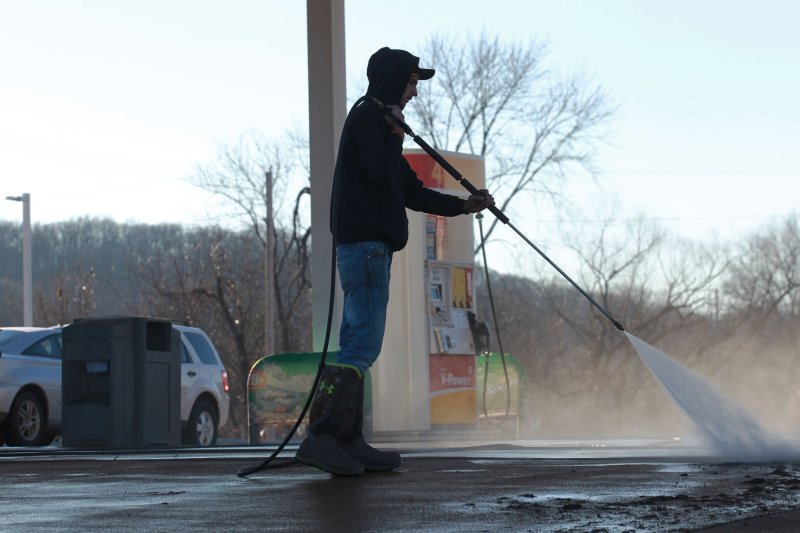The price at the pump held steady when compared with last week, even as the nation was tested by severe winter weather. File Photo by Bill Greenblatt/UPI |
License Photo
Jan. 9 (UPI) -- Severe winter weather put a strain on the U.S. energy grid, but low consumer demand for gasoline left the price at the pump stable, market reports found.
More than a foot of snow fell on some major eastern U.S. metropolitan areas and temperatures dipped to sub-Arctic levels. Utility companies servicing states like New York and Massachusetts said they were braced for long-term outages, though much of the grid escaped with minor damage.
For gasoline, Jeanette Casselano, a spokeswoman for motor club AAA, said there wasn't much of a test for gasoline.
"On the week, consumer demand for gasoline decreased," she said in a statement. "If this continues, gas prices will decrease in the weeks ahead."
AAA reports an average retail price nationwide of $2.49 for a gallon of regular unleaded gasoline on Tuesday, an increase of less than a half percent from last week. Oil prices, meanwhile, are up almost 2 percent from the start of the year and showing up as a factor at the pump.
By region, the West Coast market is the most expensive in the country, with California taking top honors in the Lower 48 with $3.16 per gallon, though that price is inflated by a new tax that went into effect last year. Washington state, however, is close behind at $2.92 per gallon. Regional prices have been volatile, but more or less steady, with Tuesday's state average in California only less than 1 percent higher than a month ago.
AAA said the high level of gasoline supplies in the region was keeping a lid on prices, and the pace at which refineries were working was "healthy."
The same held for many eastern U.S. states despite the severe winter weather last week. By AAA's account, there were no major supply issues, though the regional market is running a 7 billion barrel deficit for gasoline supplies when compared with last year. The state average for Massachusetts of $2.59 per gallon is unchanged from this time in December.
The Great Lakes market, however, is not so lucky. The price at the pump in Michigan dropped six cents last week, but at $2.63 is just out of the Top 10 when it comes to the most expensive gas in the country. Illinois and Michigan led the nation when it came to volatility over last month.
Patrick DeHaan, a senior analyst at GasBuddy, said the Great Lakes states should see prices move even higher because of a retail practice dubbed price cycling. That's when gas stations drop prices to gain business, but as retail prices approach wholesale prices, stations need to push the price back up to make money.
"In the weeks ahead, the national average is likely to begin trending lower as winter gasoline inventories surge and as refiners will soon offer discounts to move these fuels out of their systems to make way for the eventual transition to summer blends of gasoline," he said in a statement.















